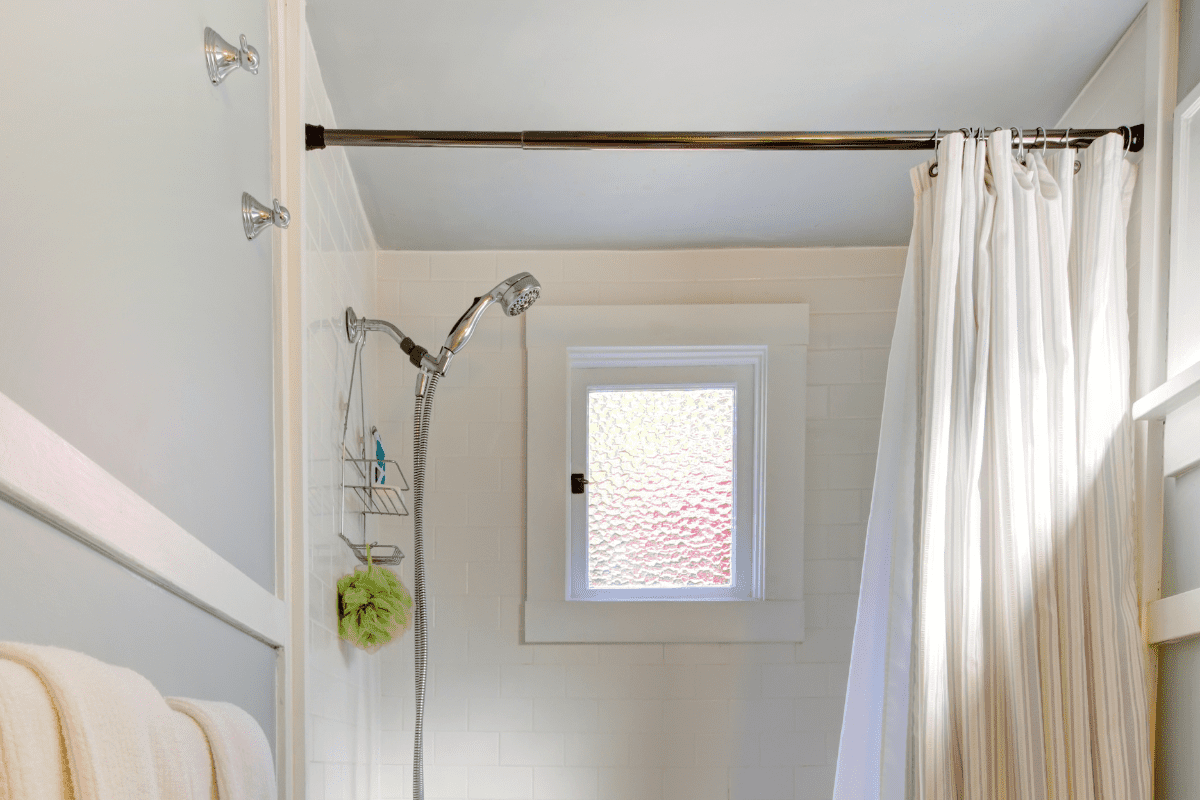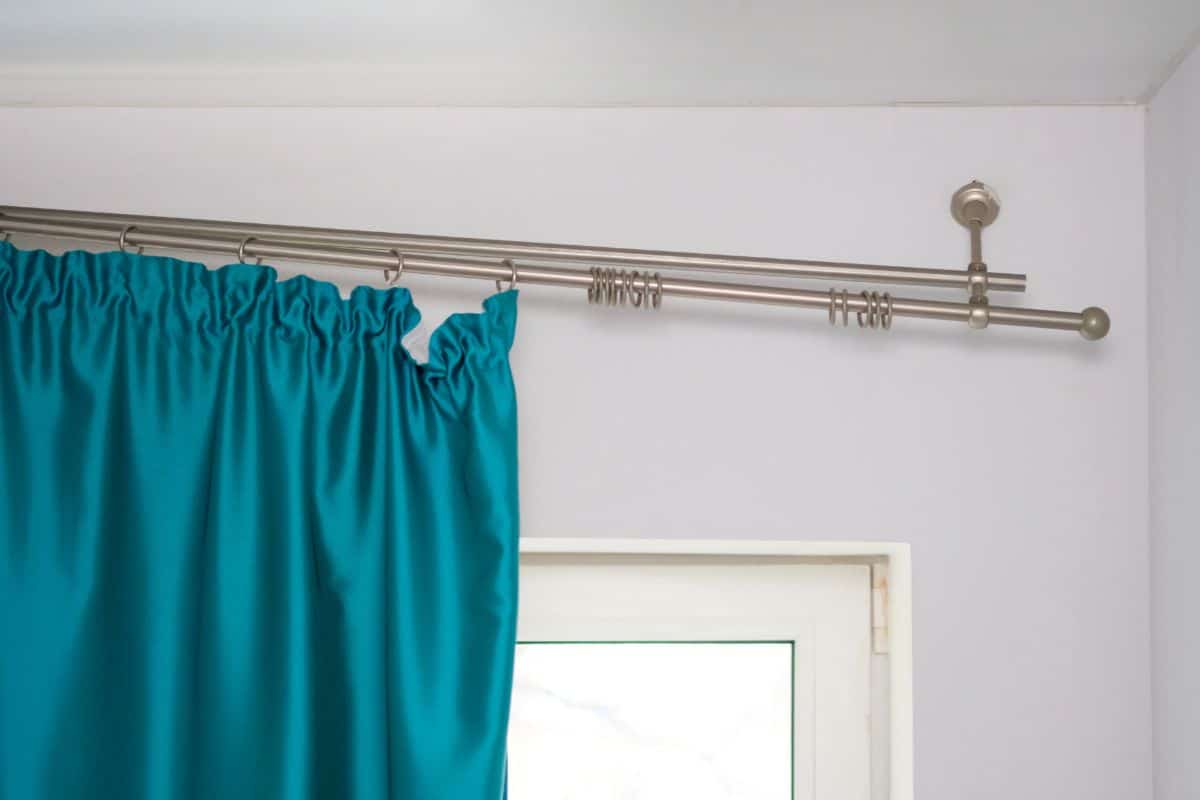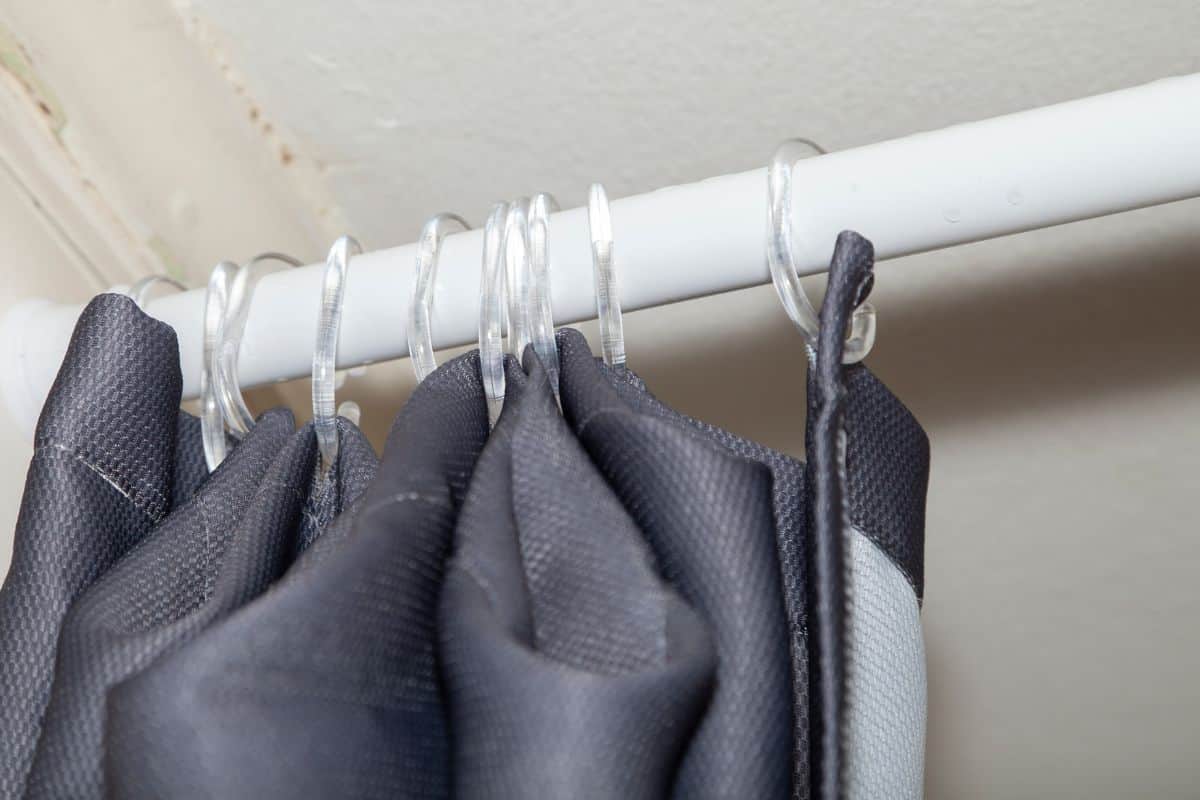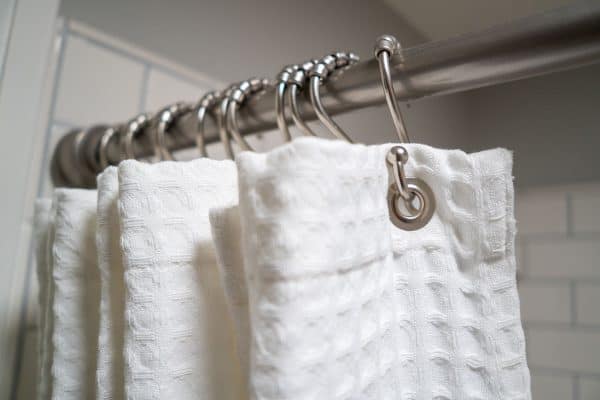A shower curtain rod that keeps falling can be frustrating. That's why we're here to help you out. We asked the experts for recommendations on how to get it to stay up, and here's what they have to say.
You can put felt or rubber furniture pads, adhesive brackets, or permanent brackets at the ends of your shower curtain rods to help them stay in place.
Keep reading to know how to use these reinforcements and better understand why your shower curtain rod won't stay up. We'll also answer if you can drill screws into the tile and teach you how to do it successfully without damaging your tile wall. Let's go right into it!

How To Keep Your Shower Curtain Rod From Falling
It is frustrating and annoying to have your shower curtain rod keep falling, again and again, no matter what you do about it.
Worse, it always seems to happen at the most inconvenient times - when you've got shampoo all over your hair (and eyes) or when you're in a hurry to get out of the shower because you're already running late for work.

We get it. We all just want peace of mind when we're in the shower. So, what solution works for this shower curtain problem?
We've compiled recommendations from the experts so you can choose a solution that works best for your situation. We understand that not all bathrooms are the same, so we searched for the best solutions that should suit your particular need.
Felt or Rubber Furniture Pads
These pads aren't just for your furniture. You can also put them at the ends of your shower curtain rods, and they'll prevent them from sliding down. They help create friction between the rod and the wall to keep them in place.
Check out these rubber furniture pads on Amazon.
Adhesive Brackets

These brackets will help keep your rods in place by offering support at their ends. They are great for those who don't want to (or can't) drill holes in their bathroom walls.
Find these self-adhesive curtain rod holders on Amazon.
Brackets
These brackets are similar to those used in your curtain rods in the living room. They offer sturdier support to your shower curtain rod since you drill and mount them on the wall.
Click this link to find these shower curtain rod brackets on Amazon.
We believe these tried and tested methods will solve your falling rod woes.
Why Won't The Shower Rod Stay Up?
To know what solution will work best for your shower curtain rods, you need to understand better why they keep falling in the first place.
Many people use tension rods for their shower curtains. These are quick-fix solutions to hang their curtains without needing any tools or hardware. They are easy to install because you do not need to drill holes in the bathroom walls.
Tension rods have springs, so you can simply adjust their length as needed and ensure that they fit as snugly as possible in the given space. Extend the length of the adjustable piece until it fits tightly. That's the key to having them stay in place.
But this ideal situation is not always a reflection of the experience in the bathroom. Below are some reasons why the rods fail to stay in place and some suggestions for addressing the matter.
Overweight Curtains

Shower curtain rods can't bear too much weight, so use lightweight shower curtains.
For reference, spring rods can handle 10 to 15 lbs, standard aluminum rods can hold up to 20 lbs of weight, heavy-duty aluminum tension rods can hold around 30 lbs, and steel tension rods can take on up to 45 lbs.
Therefore, your shower curtain (plus all the other stuff you hang on the rod) should not be heavier than its load capacity. Otherwise, the rod won't stay up.
Improper Installation

Improperly installed shower rods won't stay in place. It would be best to get a properly sized rod for your bathroom. Measure from wall to wall so you can buy the right length. When you have the right size, installing the shower curtain rod is easy.
Put it up at an angle where one side is higher than the other. The lower height is your desired height. Next, adjust the fit by twisting the rod so that both ends will be straight. Also, note that there should be enough tension in the springs for them to fit perfectly.
Smooth Tiles
If you have tiles on your bathroom wall, the shower curtain rod could have difficulty staying in place because of the tiles' smooth surface. This often happens because friction isn't enough to keep it in its position.
We will discuss how you can tackle this challenge in the next section.
Can You Drill Screws Into The Tile?
For a permanent solution to your shower curtain rod woes, you can drill screws on your walls to mount brackets where the rod's ends can rest.
But having tiles on the walls makes this a bit more challenging. You may wonder where to drill the holes - on the tile grout or the tile itself - or the implication drilling will have on your beautiful tiles.
We understand your concern. Drilling screws on the tile grout isn't recommendable since it is neither stable nor durable.
There could also be cracks along your wall if you use the wrong tools and materials or don't know how to put screws into tiles. Consequently, the result may be a bigger problem (and more expensive repair costs) than just having a falling curtain rod.
But when you have the proper tools and materials, you can get the job done without hurting your tiles.
Here are the things that you need to prepare.
Carbide-tipped or Diamond-tipped Drill Bit
These are specialized tools that are strong enough to penetrate the tile's hard surface. You'll attach them to your power drill to create holes in the tiles.
Check out this carbide-tipped tile drill bit set on Amazon.
Plastic Anchors
Putting the plastic anchor inside the hole will enhance the tile's weight-bearing capacity so it won't get damaged easily.
Check the plastic anchors' tensile strength value rating and choose one that suits your needs. Usually, an A5 anchor is good enough for curtains weighing 57 lbs or less, but if you have heavier shower curtains or intend to hang something else on the rod, you need one with higher tensile strength.
Find this plastic anchor on Amazon.
Tile Screws
These can be made of stainless steel, galvanized steel, hot-dipped galvanized steel, or bronze. The tile screws fit inside the anchor, and together they can secure your curtain rod in its place.
Click this link to find this self-tapping screws and anchor kit on Amazon.
How Do You Screw Into Tiles?
So, here's how you can safely put screws into your tiled bathroom wall.
- Use painter's tape to put an X mark right where you want the screws to be.
- Carefully and slowly, push the drill through the tile surface. Don't work too fast, as this will increase the risk of your tiles cracking, which we're trying to avoid here.
- Insert the plastic anchor using your hand. You can use a rubber mallet if you need to apply more pressure to get it inside.
- You can now put a tile screw inside the anchor.
There you go! You can now mount brackets on the walls so you can hang your shower curtain, and you won't have to deal with falling rods again.
Feel free to make this your DIY project if you have the skills and tools for the job. But if you don't have any experience drilling holes into tiles, it's best to leave this job to the professionals to avoid damaging your tiled wall.
Final Thoughts

If your shower curtain rod won't stay in place even though you've installed it properly, it's time for you to use reinforcements to help them stay in place. There are permanent and non-permanent options, so you can choose any that suits your bathroom situation.
Looking for more curtain tips? Check out our related posts:







![Blank white closed shower curtain mock up, front view,. Empty toilet apartment with bath curtain mockup. Screen blind slip in indoor furniture template. - Do Shower Curtains Come In Different Lengths [And What Is Right For You]](https://housepursuits.com/wp-content/uploads/2022/10/BLANK-1-600x400.jpg)

